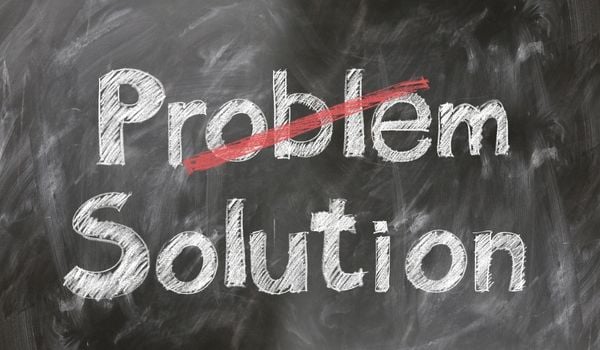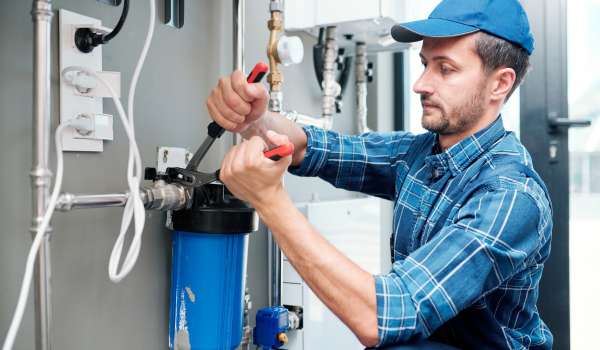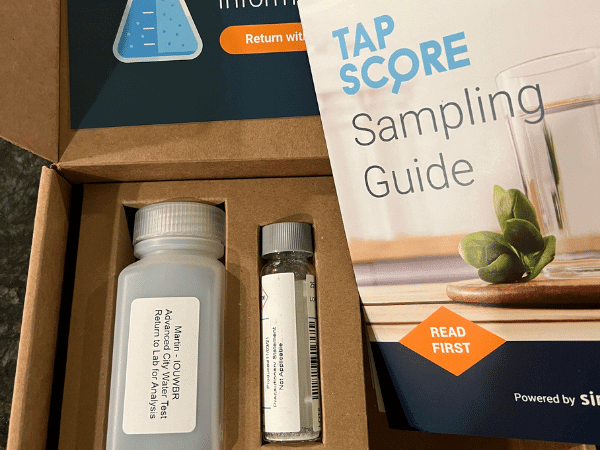If you’re swapping out filter cartridges like they’re paper towels, you’re not alone — and you’re definitely not crazy. A whole-house filter should last months, not weeks. So what’s going on?
From sneaky plumbing issues to sediment-heavy well water, there are several reasons your filter might be clogging up quicker than expected. Let’s get to it…
🔑 Key Takeaways
- 💧 Filters are supposed to get dirty — that means they’re working. But if you’re changing them too often, something’s off.
- 📉 Low water pressure is often the first sign your filter is full or clogged.
- 🔍 Short filter life could be caused by high sediment levels, the wrong micron rating, or well-related issues.
- ⚙️ Cheap filters, poor water quality, or plumbing problems may be to blame.
- 🛠️ Simple upgrades like a spin-down filter or pressure gauge can extend filter life and save you money.
💭 Why Do Filters Get So Dirty?

The short answer? That’s what they’re supposed to do.
As water flows through your filter, it leaves behind sediment, rust, and whatever else it’s dragging in. That buildup gets trapped in the cartridge — and over time, it changes color to match what it’s catching. That’s totally normal.
The trick is timing the replacement. You want to catch it before it clogs, but after it’s done its job. For most homes, that’s every 6–9 months. Jumbo cartridges may stretch that closer to a year.
Here’s an article going into depth on how long filters last in general.
🔁 When Should You Swap Out the Filter?

Knowing exactly when to replace your filter isn’t always clear-cut. Manufacturers give estimates, but in the real world, usage and water quality can shift the schedule.
If your water pressure suddenly dips — like your shower turns into a drizzle — that’s often your first clue the filter’s packed with gunk. But by that point, contaminants may already be slipping through.
💡 Pro Tip: If your system doesn’t have pressure gauges, consider adding them before and after the filter. You’ll be able to track changes in flow and get ahead of clogs without guessing.
Some telltale signs it’s time for a change:
- Drop in water pressure
- Filter cartridge looks discolored (though some minerals stain early)
- Water tastes or smells off
You’ll start to recognize the pattern — and with a little tracking, you can swap them at the sweet spot between clean water and smart maintenance.
⚙️ Why Do Filters Get Dirty So Fast?

If your filter seems to clog way ahead of schedule, you’re not imagining it — but it’s usually not the filter’s fault. A few common culprits might be at play.
🔍 Water Quality & Usage
The more sediment in your water or the more gallons flowing through your home daily, the faster your filter fills up. Think of it like a vacuum bag — the dirtier your floors, the quicker it clogs.
Hosting guests? Running laundry daily? Even seasonal changes (like spring runoff or dry spells) can affect how quickly your filter gets overwhelmed.
📏 Micron Rating Too Low?
If your filter has tiny pores — like 1 micron or less — it’ll trap even fine particles. That’s great for clean water, but not so great for filter life.
If you don’t need that level of precision, consider switching to a slightly higher micron rating to extend the life without sacrificing water quality.
💧 Issues With Your Well or Plumbing?
Older wells, aging pumps, or a misbehaving pressure tank can stir up more debris than usual. Even temporary weather events — like heavy rain or drought — can lead to murky water that dirties your filters faster.
And don’t rule out your plumbing. A minor leak or corroded pipe can sneak contaminants into your water supply before it even reaches the filter.
🛠️ Solutions for Fast-Clogging Filters

If your filter looks like it’s been through a mudslide every few weeks, here are some simple fixes that might help without a major overhaul.
🔄 Upgrade the Filter (or the Housing)
Some filters just aren’t built to keep up. Upgrading from a standard 10-inch to a 20-inch cartridge can double the filtering capacity and cut maintenance in half. It’s one of the cheapest fixes with the biggest payoff.
✅ Stick with NSF-Certified Cartridges
Off-brand filters might look the same, but they often perform worse. We recommend using cartridges made by your filter’s original manufacturer — or at least ones that are NSF-certified to actually do what they claim.
📆 Track Filter Changes
Think you changed your filter last month? It was probably three. Stick a date label on the housing or jot it down on your phone — it’ll help you spot patterns and catch early signs of problems.
🔧 Pro Tip: Install a Pressure Gauge
A pressure drop is one of the earliest signs your filter is clogging. By adding a simple pressure gauge before and after the filter, you’ll know exactly when it’s time for a swap — no more guessing.
🕵️♂️ Have Your Well Inspected

If you’re on a private well and your filter keeps clogging, the issue might not be your filter at all — it could be your water source.
Over time, wells can accumulate: sediment, rust, or even sludge from an aging pressure tank. A worn-out well pump can also stir up debris, especially if the water table is running low or you’ve had recent heavy rain.
Good news: well inspections are affordable and can rule out deeper issues before you spend big on new filtration equipment.
🔧 Pro Tip: Most experts recommend a well inspection every 5 years, even if everything seems fine. A quick check now can save you from a surprise plumbing bill later.
See our top rated whole-house well filters
🧪 Have Your Water Tested

Not all clogs are created equal. If your filter keeps gunking up and you’re not sure why, a professional water test can help pinpoint the culprit.
Basic DIY kits can tell you a little, but lab-based testing gives you the full picture — especially when it comes to iron, manganese, tannins, or other sneaky contaminants that love to clog up cartridges.
We recommend Tap Score’s Essential Well Water Test because it screens for more than 50 potential troublemakers. You’ll also get easy to read results with actionable advice.
🔍 Helpful to Know: Some filters are great at catching sediment, but struggle with slime-forming bacteria or tannins. Knowing exactly what’s in your water helps you choose the right system the first time.
🔁 Try a Spin-Down Filter
If your filter clogs constantly from heavy sediment, a spin-down filter could be a game-changer. These pre-filters catch larger particles like sand, rust, and grit before they reach your main cartridge filter.
Unlike disposable filters, spin-down models are reusable. You just twist the valve to flush out the debris — no tools, no replacements, no recurring costs.
💡 Pro Tip: Spin-down filters are especially helpful for well owners dealing with dirty water after storms or droughts. They’re an easy first line of defense that helps extend the life of every filter that follows.
🌀 Install a Sand Separator
If your filter keeps filling up with sand or fine grit, a centrifugal sand separator might be your best bet. These clever devices spin incoming water at high speed, using centrifugal force to push heavier particles — like sand or silt — to the outer wall and down into a purge valve.
That means fewer clogs, less abrasion on pipes and appliances, and way less maintenance on your main filtration system.
💡 Good to Know: Sand separators don’t need electricity or backwashing — once installed, they run quietly in the background. It’s a smart upgrade if you live in an area with naturally sandy soil or draw from a shallow, gritty well.
🧠 Final Thoughts
A water filter that clogs constantly is more than a hassle — it’s a sign that your system needs a closer look. Whether it’s sediment buildup, a mismatched micron rating, or just a super active household, there’s almost always a fix that doesn’t involve throwing money down the drain.
✅ Step one: test your water.
✅ Step two: match your filter to your needs.
✅ Step three: consider upgrades like a spin-down filter or sand separator.
With the right setup, your filter should quietly do its job in the background — not dominate your maintenance schedule. Cleaner water, fewer headaches. That’s the goal.
 97 people found this helpful. Was this guide helpful to you?
97 people found this helpful. Was this guide helpful to you? 

